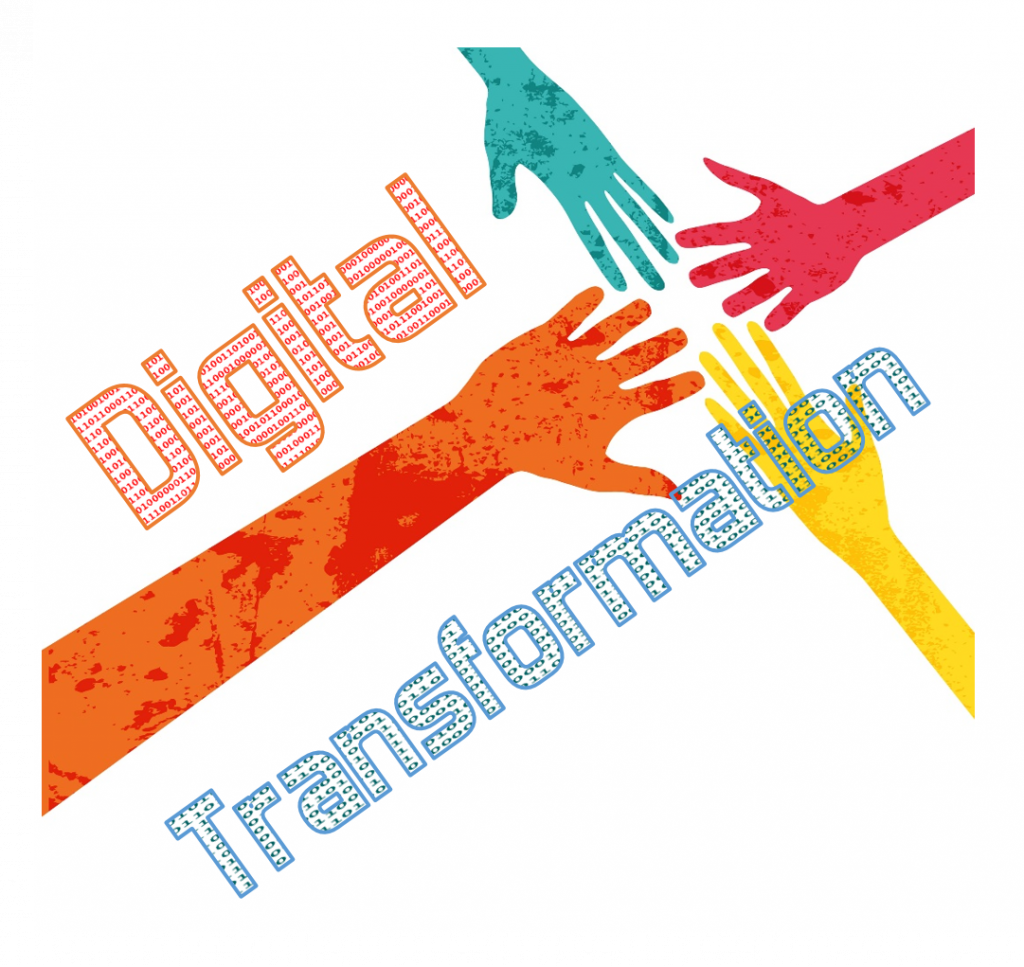There is clear consensus among business analysts that organizations operating using principles and technologies developed during the industrial age need to embrace digital transformation if they are to survive. During a conference held in late 2017, Gartner analysts asserted companies should feel an increased the sense of urgency when it comes to transformation because, they believe, too many enterprises are falling behind. Scot Petersen (@scotpe), a technology analyst at Ziff Brothers Investments, reports Gartner analysts raised their concerns because “certain technologies, particularly artificial intelligence and connected devices … are starting to have a real impact among disruptive users, while most enterprises lag behind.”[1] Milind Govekar, Chief of Research with Gartner’s Infrastructure & Operations group, stated, “Digital is real and it is disrupting, attacking the weaknesses of incumbents.” Gartner’s message is not new, only intensified. A few years ago, Rob van der Meulen (@bobvdmeulen), Gartner’s Public Relations Manager in the UK, wrote, “The age of digital business is around us, and every person, company and industry is increasingly affected by their use of technology.”[2]
Digital Transformation and Cognitive Computing
At the Gartner conference mentioned above, Dave Russell, Gartner Vice President and Distinguished Analyst, told participants, “Enterprises need to ruthlessly seek to retire infrastructure that has no more useful life and to stop deploying systems that create high technical debt.” Petersen adds, “The oft-repeated takeaway from conferences like these — don’t deploy technology for its own sake, but rather for solving business problems — has a new resonance now. Technologies like AI are moving so quickly that if users don’t start looking into it now, it may soon be too late, Gartner says.” To understand why artificial intelligence (or cognitive computing) plays so prominently in Gartner’s thinking, one must turn to the most prominent characteristic of the Information Age — Big Data. Daniel Newman (@danielnewmanUV), principal analyst of Futurum Research and CEO of Broadsuite Media Group, writes, “Access to big data has changed the game for small and large businesses alike. … Big data can help businesses solve almost every problem with a working, research driven solution.”[3]
The modifier “Big” was added to “Data” when the amounts of data being generated were simply too large for traditional analytic systems to handle in a reasonable amount of time. Hence, it is no coincidence cognitive computing technologies began to flourish as the amount of data grew. Basically, cognitive computing is software that combines human-like reasoning with cutting-edge mathematics, wrapped in natural language, to solve complex problems. Cognitive computing systems can collect, integrate, and analyze both structured and unstructured data in order to glean actionable insights and discover new knowledge and relationships. My company’s entrant in this field is the Enterra Enterprise Cognitive System™ (Aila™) — a system that can Sense, Think, Act, and Learn®. One of the benefits of a cognitive computing system is that it can often increase the useful life of legacy systems since it wraps around rather replaces other IT systems. The point Gartner is trying to put across is that without something like a cognitive computing platform upon which to build, the amount of data required to be analyzed and leveraged to achieve digital transformation will overwhelm traditional analytic systems.
Digital Transformation isn’t just about Technology
Newman notes, “Digital transformation helps companies embrace a culture of change and remain competitive in a global environment. … Big data allows companies to make meaningful, strategic adjustments that minimize costs and maximize results.” The term “strategic adjustments” is a bit of understatement. The Digital Age often calls for completely different business models. Technology supports those business models but simply adding new technologies doesn’t result in transformation. It’s called digital transformation for a reason. The first goal an enterprise should pursue in its transformation efforts is becoming a data driven business. Martin Doyle (@DQMartinDoyle), CEO and founder at DQ Global, explains, “Data-driven businesses use real-time data to guide every business activity. Withholding information will not help you achieve your business goals, which is why everyone within your organization should have access to relevant data, but also access to it 24/7. This will ensure everyone is on the same page and will provide all employees with the same opportunities to notify management of any unusual changes in the data. Increasing access to data will also help you achieve your agile business model.”[4]
Chris Crane, Co-Founder & VP of Product at Scout RFP, agrees successful companies need to become agile or flexible. He suggests three things create “a widespread lack of flexibility [that hold] enterprises back from this transformative digital evolution.”[5] They are:
1. Inability to experiment quickly. “According to HBR research, the inability to experiment quickly is a top barrier to enterprise digital transformation. In fact, 53 percent of businesses cited it as a roadblock to technology adoption. One factor impacting this lag in experimentation is that most large enterprises are bound by tiered approval and implementation processes, which make it difficult for them to test and ultimately select new technology solutions.” At Enterra Solutions®, we use a crawl, walk, run approach with clients that fosters experimentation and refinement before full-scale implementation.
2. Legacy systems. “Legacy solutions and disparate tools like Excel and email are major barriers to digital transformation. Although they aren’t perfect, they do perform, and organizations are hesitant to turn away from what’s already been ‘working’ for years and upgrade to more efficient process. In fact, 52 percent of organizations rate legacy systems as their second most substantial barrier to digital transformation, according to HBR.” As noted above, not all legacy systems need to be replaced if a cognitive computing platform can usefully leverage the data it generates. What’s important is to find and leverage technologies that solve business problems.
3. Silos that isolate and inhibit the enterprise. “Silos — created largely by legacy software — have broken the business up. In the 90s and even early 2000s, when consultants were building databases for the era’s then-cutting edge technology, information was clustered into, well, silos. Although technology moved eons forward in the intervening years, the silos remained.” Since cognitive computing systems can integrate all types of data, they can help break down information silos and provide the right information to the right people when they need it.
Digital transformation involves rethinking how processes, people, and technologies can best be used in the Information Age to gain a competitive advantage. Adopting technologies simply because they are the latest craze is not a winning business strategy. Having said that, I believe most companies will find the benefits of cognitive computing compelling since they can improve almost every aspect of an enterprise’s operations.
Summary
Charles Babcock (@babcockcw), a computer industry journalist, notes, “Most enterprises are in the early stage of becoming a digital enterprise and still have much to do before they have thoroughly changed the way they deliver business services and interact with customers.”[6] I firmly believe cognitive computing platforms can help companies transform faster and more effectively into digital enterprises. Crane cites a Harvard Business Review study that concluded, “Leading-edge technology platforms can bring together previously siloed personnel and processes, remove resource-intensive and error-prone manual interventions, provide end-to-end visibility into sourcing projects and performance, facilitate an enterprise-wide sourcing methodology, and allow both internal and external stakeholders to work together effectively in real time. This can provide the foundation for a radical rethinking of procurement and a sourcing transformation — which, in turn, are vital objectives for any enterprise striving for strategy-driven results.” Cognitive computing platforms can provide that kind of flexibility and improved decision-making to all parts of an organization. It’s time to open your corporate arms and embrace digital transformation.
Footnotes
[1] Scot Petersen, “Gartner Says Enterprises Must Embrace Digital Transformation in 2018,” eWeek, 5 December 2017.
[2] Rob van der Meulen, “When Smart Things Rule the World,” Smarter with Gartner, 14 August 2015.
[3] Daniel Newman, “The Role Big Data Plays In Digital Transformation,” Forbes, 22 December 2015.
[4] Martin Doyle, “Six Tips to become a Data Driven Business,” Datafloq, 2 October 2016.
[5] Chris Crane, “Why aren’t more enterprises adopting digital transformation?” ITProPortal, 23 June 2017.
[6] Charles Babcock, “Not Easy To Get To Digital Transformation Jump-off Point,” InformationWeek, 14 July 2017.





